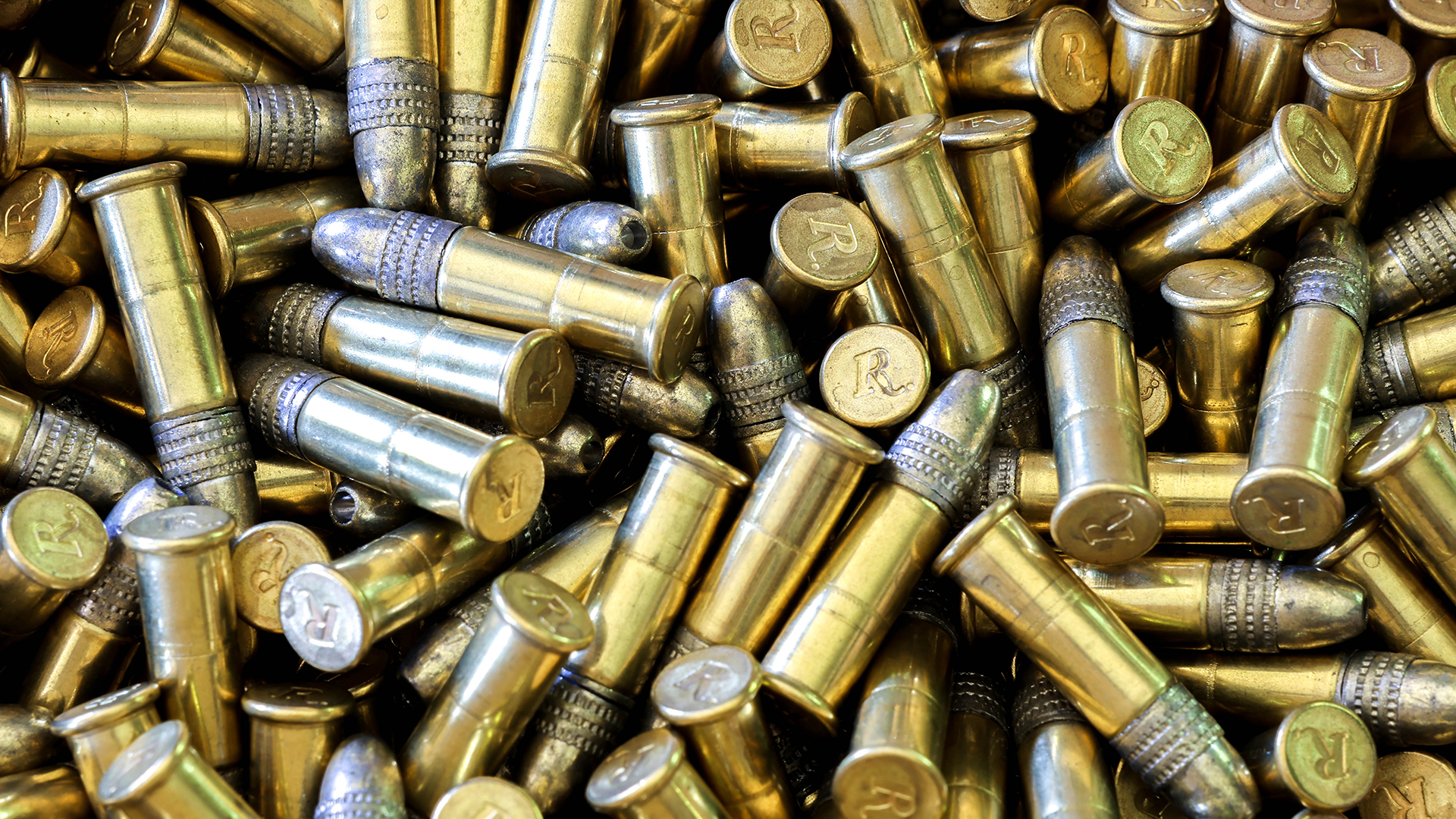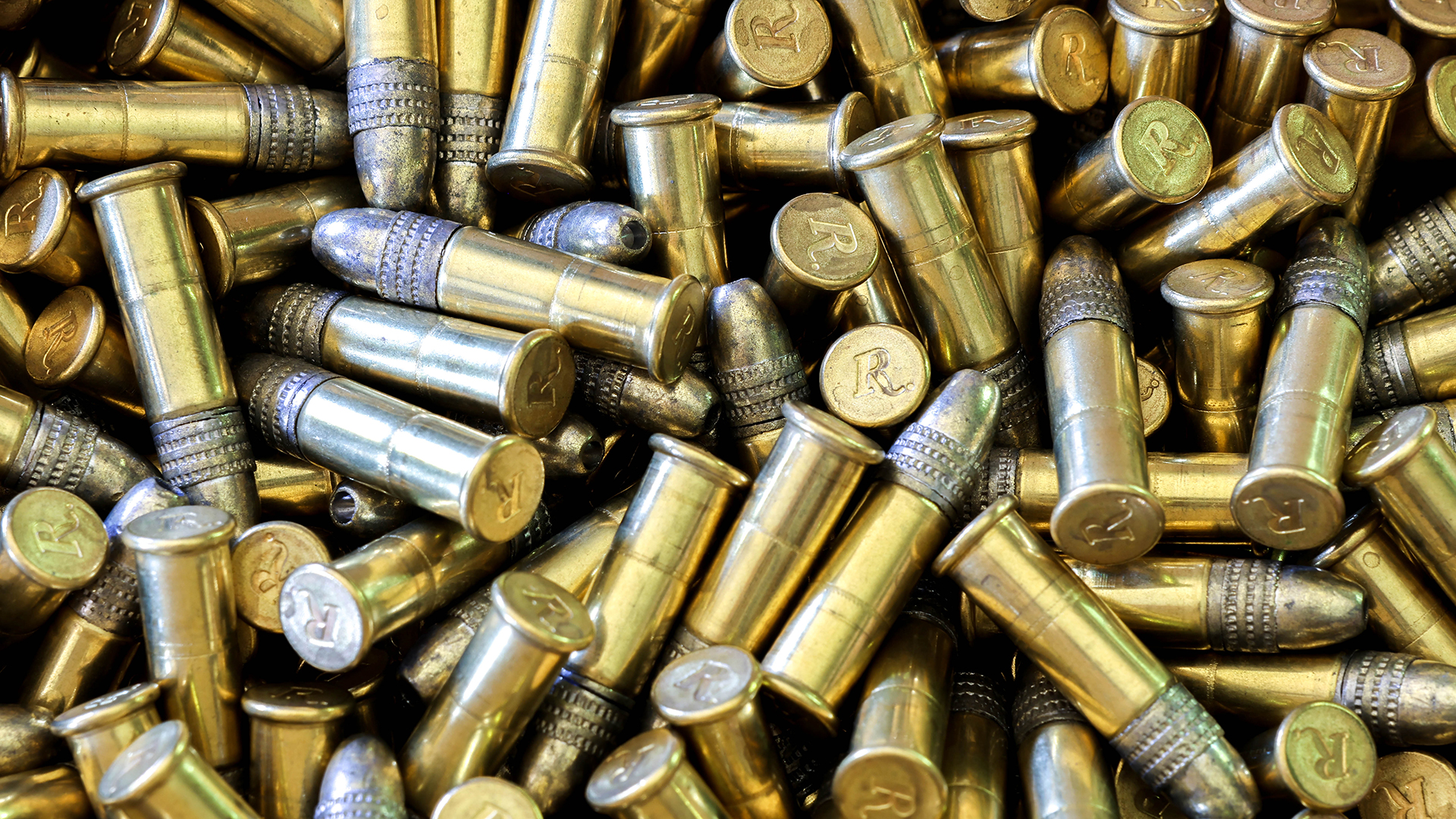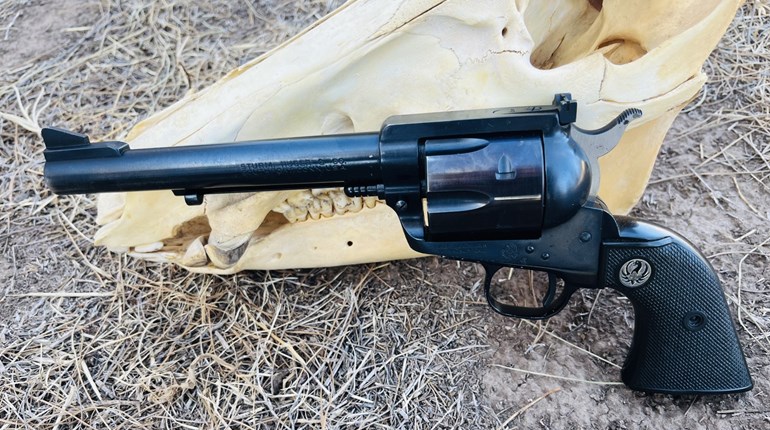
Without a doubt, handgun hunting is one of the most challenging of the hunting sports. When done properly and successfully, it combines marksmanship, knowledge of the game and woodcraft at an extremely high level. I started handgun hunting about 40 years ago. I have always enjoyed getting close to a wild animal and making a clean kill; sort of beating him at his own game, if you will. After all these years, I still look forward to the fulfillment it provides. Believe me when I say that the path to success lies in practicing safe gun handling and marksmanship, and determining your maximum effective range. If you carry those skills into the field, a clean, humane kill and a great day in the woods will result.
Safety First
Safe gun handling is a skill that is often overlooked. The handgun hunter must become so familiar with his handgun that he can get it ready to make the shot while his eyes stay on the game. He should be able to recharge the gun, remove the scope covers, cock the hammer or otherwise do whatever is needed without looking at his handgun.
He should also be able to get into his chosen shooting position without covering himself with the muzzle. It sounds simple. But how many times have you seen a handgunner get into a kneeling or sitting position and then draw his handgun? Think about it. He will almost always cover some part of his body with the muzzle. Often it is the femoral artery.
Getting into solid field positions should begin with the handgun drawn and the muzzle pointed in a safe direction. Only when this is done is it safe to assume the position. Getting into field positions shouldn’t be an event. It should be second nature. That means that one doesn’t have to look down at his feet, or the ground, while he is assuming a kneeling position. He goes to the practiced position while his eyes remain on the animal and his muzzle is pointed in a safe direction.
Marksmanship
The goal of any hunter should be to deliver a quick and humane killing shot. To accomplish this it is necessary to pay close attention to the three basics of marksmanship: sight picture, trigger squeeze and breath control. Those who do not master these basics will never be successful in the field.
To begin with, the hunting handgun should be sighted in so shots print dead-on at a practical range, say 50 yards. Practice will tell you just what sight picture the handgunner should see to deliver a shot to the proper point of aim. If that sight picture changes, even as he is in the act of squeezing the trigger, he learns to make the slight adjustment necessary to correct it.
Trigger squeeze, or trigger press, refers to slowly and gently adding pressure to the trigger until the gun discharges. When practiced properly, the trigger squeeze is so gentle that it is accomplished without affecting the sight picture. Rather than anticipate when the gun will fire, it’s best if the discharge is a bit of a surprise. The real challenge occurs when the gun fires, because the thumb and three fingers of the shooting hand must maintain a strong grip on the gun to control the heavy recoil of hunting ammo, while the trigger finger must gently pull the trigger.
Breath control is important because it is virtually impossible to deliver a well-aimed shot while breathing. The body and, therefore, the gun are always moving. Accuracy improves when the shooter exhales all or most of the air, from his lungs and then holds his breath while he adjusts the sight picture and finishes the trigger press.
While these basic marksmanship skills seem simple, it can be difficult to put them together in the proper combination needed to make an accurate shot. This is why practice is so important. It is also the reason a handgun hunter, especially a beginner, is better off taking a shot at standing game that is not alarmed. Even on running game, however, basic marksmanship skills are critical to ensure a clean kill. With practice, the handgun hunter learns to compress the basics and make the shot.
Field Positions
The prone position is rarely of use in the hunting field because the line of sight is obscured by grass, rocks and natural contours of the land. At the other end of the scale, firing from a standing position, even with a solid two-hand hold, is one of the least-accurate positions the handgun hunter can use. It is far better to make the shot when kneeling or sitting, or by using an available rest. When wandering through the woods, the experienced handgun hunter is always conscious of a nearby rock, tree limb or tree trunk that can be used as a brace to steady the shot.
When sitting, I like to brace myself against a tree or similar stable object. Your elbows should settle against your thighs on the inside of your knees, not on top of them, for the most solid rest. Keep your feet flat on the ground.
When kneeling, position your legs at a 90-degree angle from each other to provide the most solid foundation. Don’t rest your support elbow directly on your knee, as this is bone-on-bone contact and can get wobbly. Place your support elbow in front of your kneecap and line it up with your support knee, one atop the other, allowing the bones to support the gun and not the muscles.
In the standing position, your feet should be spread apart, about the width of your hips, your knees slightly bent. Your shooting arm should be slightly bent at the elbow, with your support elbow pointing down. Take an isometric hold on the gun; the support hand pushes back and the shooting hand pushes forward. This is the Weaver stance, which helps control the heavy recoil and get the gun back on target quickly.
When shooting off sticks, it is best to rest the wrist of your shooting hand—not the gun—in the crotch of the sticks whenever possible. A gun rested on a hard surface, even shooting sticks, may cause the point of impact to change. I think the handgun hunter should practice with and without sticks. Sticks work best when you have a guide to set them up for you. Doing it by yourself can waste valuable time and prevent you from getting off a shot.
Know Your Limits
It’s important to determine your maximum effective range. While we’ve all read and heard stories about handgun hits made at amazing ranges, we don’t hear about all the misses and wounded animals such foolishness produces. And, in fact, what someone else can do with a handgun actually has nothing to do with what we can do with ours.
Maximum effective hunting range is that range at which the shooter can place all shots into the game animal’s vital zone on demand and under field conditions. That “on demand” is an important term. In other words, it’s not what you’ve done once, but what you can do virtually every time. Again, determining your effective range takes practice. Obtaining life-size targets of the actual game animal you plan to hunt will provide some realistic practice and also an opportunity to study the anatomy of game.
One quickly realizes that the vital zone of most game animals can be contained in an 8-inch circle. So an excellent and inexpensive target can simply be an 8-inch paper picnic plate. Set up the plate on the backstop and shoot from the various field positions that are useful in actual handgun hunting: standing, kneeling and sitting. In each position, the range at which all shots will stay on the plate is the maximum effective range. Obviously, the more one practices, the more that range can be extended.
In the Field
In the hunting field the successful shooter not only holds on the vital zone but actually picks a spot within it—maybe a tuft of hair, a wrinkle—where he intends for the bullet to impact. And the successful handgun hunter keeps the game in visual focus until just before the shot is fired. At that moment, the eye should be focused on the front sight or the scope’s cross-hairs in order to deliver the most accurate shot possible.
Handgun hunting should be all about matching your skills against the game animal so you can stalk within your effective range and make a clean, humane kill. What pleases most of us handgun hunters is the challenge of using woodscraft to get close to the game. In fact, the hunter who is enamored with long-range shooting might be happier sticking with rifle hunting.
For this reason, the handgun hunter should never pass up an opportunity to study game animals, learn their habits and practice stalking skills. Going out in the offseason and just wandering the woods can be extremely educational as well as a nice way to spend a day. The more one knows about the habits of wild animals and the use of terrain and cover, the better handgun hunter one will be. It also helps to have the mindset that allows you to pass up a shot at a trophy animal when you know it is beyond your maximum effective range and there is no way of getting any closer. Wish that buck a good day as it wanders over yonder hill or, better yet, plan for how you will ambush it tomorrow.
Another critical gun-handling consideration is the fact that most handgun hunters use a revolver and cock the hammer to make an accurate single-action shot at game. So far, this is the recipe for success. However, the hunter may get into position and cock the handgun only to find the game has moved and there is no longer a clear shot. So the hunter quickly jumps up to find a new position while holding a cocked gun and stumbling around on rocky, uneven ground. The plan has just turned into a recipe for disaster.
One can certainly let the hammer down and then cock it from a new position. However, another method is to simply put the thumb of the support hand between the hammer and the gun frame. The fingers of the support hand cup the frame and trigger guard and the gun is held safely and securely.
Perfect Practice
Live-fire and dry-fire practice should include getting into the various positions without having to look down or waste any time. Per NRA gun safety rules, this should start with the handgun out and the muzzle pointed in a safe direction. It is critical to first develop a solid position, and then practice getting into it quickly and safely.
Finally, you may have noticed that throughout this piece I refer to practice. That is simply because making an accurate shot with a handgun is difficult, more so than with a rifle. The more practice sessions you put in before your hunt, the greater your chances of success.
Another way to increase your chances of success measurably is to attend a good handgun hunting school. Instructors can quickly and easily diagnose your problems and offer sound corrective measures. They will show you some solid shooting positions and greatly improve your marksmanship and gun-handling skills. In short, they will cover the things that I have mentioned in this article and give the student good, sound suggestions for implementing them.
For the past couple of years, I have participated in Gunsite Academy’s new handgun hunting class. A group of us gun writers and industry folks played students and helped the Gunsite staff hone the curriculum to meet the needs of the handgun hunter. This class was scheduled so that it coincided with the opening of the Arizona javelina season, allowing students to take their freshly tuned skills out and match them against this great Southwestern game animal.
Ed Head, operations manager, tells me the Gunsite Handgun Hunting Class is now available to the public. Contact him at 928-636-4565 for details, or visit www.gunsite.com.
Another shooting school I recommend is Thunder Ranch in Oregon (541-947-4104). Clint Smith, the facility’s head honcho, is one of the best, most practical instructors working today. He is an outdoorsman and a handgun hunter who can have a student headed in the right direction in no time flat.
The value of attending a professional shooting school cannot be minimized. You can practice on your own for years and still not have the kind of success that a few days at a shooting school will provide. Shooting schools are relatively expensive but the good ones are worth it, and that’s why I only recommend those I have personally attended.




































